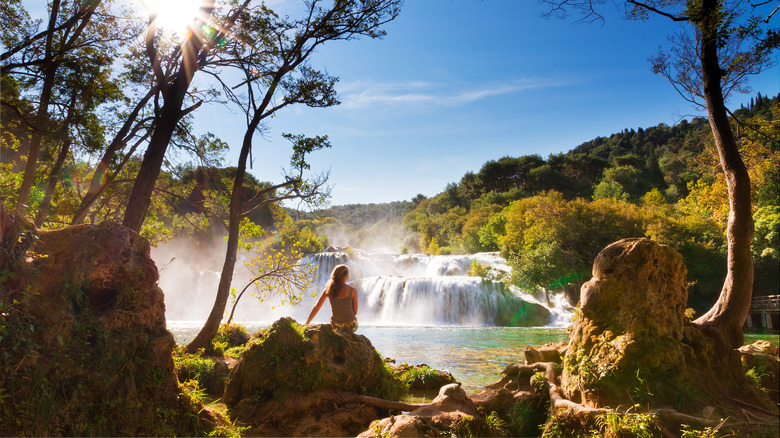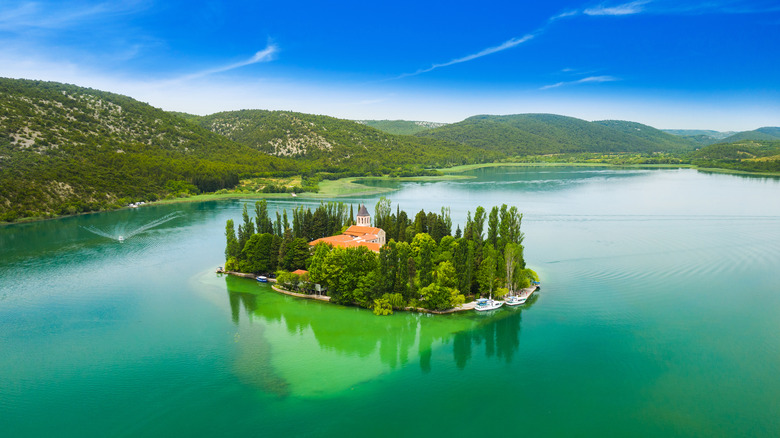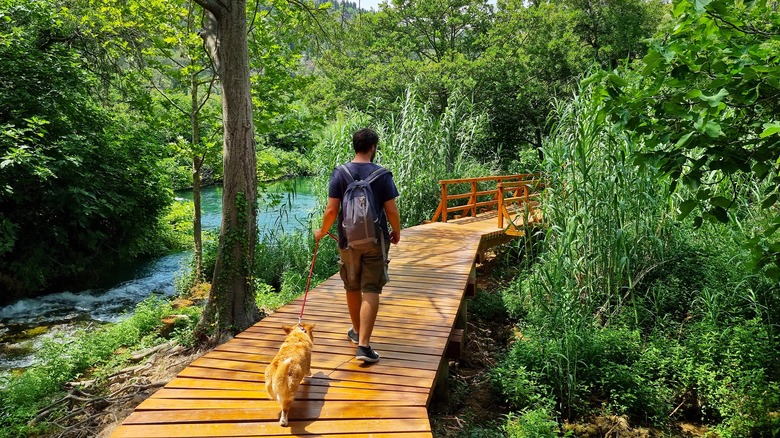This Underrated National Park In Europe Is An Otherworldly Waterfall Paradise
Whether you're chasing waterfalls, yearning for a nature escape, or searching for an underrated national park in Europe, we have just the place for you: Krka National Park, nestled in the heart of Croatia. This enchanting, otherworldly destination — often overshadowed by the likes of Plitvice Lakes National Park and the "Game Of Thrones" set-jetting Dubrovnik — is a must-visit paradise, offering a surreal landscape of cascading waterfalls, crystal-clear pools (yes, you can take a dip in them!), and lush greenery all around.
Established in 1985, Krka National Park spans over 42 square miles. The park is named after the Krka River, a remarkably clean 45-mile-long river that flows through the entire park and is responsible for the network of waterfalls and lakes that are nothing short of breathtaking. The park, located along the Dalmatian Coast near the city of Šibenik, also enjoys Croatia's Mediterranean climate, bringing higher chances of sunshine and balmy vacation weather to your adventure. Another plus is that there are fewer crowds than Plitvice (if you visit at the right time) and a super relaxed atmosphere.
The primary allure of Krka is its spectacular waterfalls, with Skradinski Buk being the park's largest and most famous (maybe you've even seen it before in viral Instagram or Pinterest photos). Skradinski Buk is a series of 17 cascading travertine falls that stretch over 2,624 feet. The cascades themselves are between 650 and 1,300 feet wide, with a total height drop of 150 feet. You have to see it to believe it.
Krka's waterfalls, wildlife, and historical sites
While Skradinski Buk often steals the spotlight, Roški Slap is another waterfall that deserves attention ("slap" means "waterfall" in Croatian). Located further upstream, Roški Slap features a series of cascades, rapids, and pools surrounded by dense vegetation. Visitors can take boat tours to Roški Slap, enjoying the scenic beauty of the Krka River along the way. Other waterfalls worth seeing are Manojlovački, Rošnjak, and Miljacka. Throughout the park, visitors can explore wooden walkways and bridges that offer views of the different falls and the surrounding forest.
Although Krka has some of the most beautiful waterfalls in the world, it's not just about cascades; it's also a biodiversity hotspot. The park has over 860 plant species, including endemic and rare varieties, with the most common being lavender, beloved by pollinators. Birdwatchers will be delighted that the park hosts more than 220 bird species, including the endangered Lanner falcon and the Calandra lark. Mammals such as wolves, wildcats, and deer also roam the park (especially in quieter areas). There are also many bat colonies in Krka due to the large number of caves.
The park is also dotted with historical sites, including the remnants of an ancient Roman aqueduct, the medieval Fortress of Klis, and the ruins of Bogocingrad, an ancient Croatian city. One of the park's highlights is the Krka Monastery, a 14th-century Serbian Orthodox monastery, and Visovac Island, which houses a 15th-century Franciscan monastery accessible by boat tours.
Activities and visitor tips
Krka National Park offers many interesting activities for visitors. Hiking trails and bike routes wind through the park, offering various levels of difficulty for all types of adventurers. The "Lozovac to Skradinski Buk" trail, for example, is a moderate 2.7-mile loop, while the "Skradinski Most" ups the ante with a 6-mile out-and-back route. For those who prefer a more relaxed experience, try a boat tour for a unique perspective of the park's scenic beauty. Each ticket to Krka includes a 20-minute boat trip to Skradin, a historic town, so you should definitely take advantage and check it out.
Swimming is another popular activity in Krka National Park. The clear, refreshing waters of the Krka River are perfect for a rejuvenating dip, especially during the extremely hot summer months. However, it's important to note that swimming regulations vary based on weather conditions and water levels. Swimming is permitted at designated areas near Roški Slap, Stinica, and Pisak between June 1 and September 30. It's still advisable to double-check with park authorities and on-site signage before taking a plunge.
The best time to visit this Croatian National Park is in the off-season, between October and April. Or, a little closer to peak season and better weather, in May, June, and September. During July and August, the park does get extremely busy, and the crowds might detract from the tranquil nature visit you're likely hoping for. The park is open year-round, and you can pre-book your tickets here.


